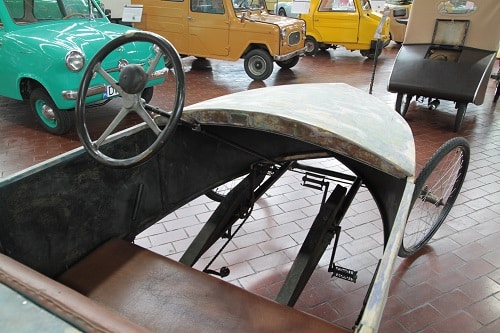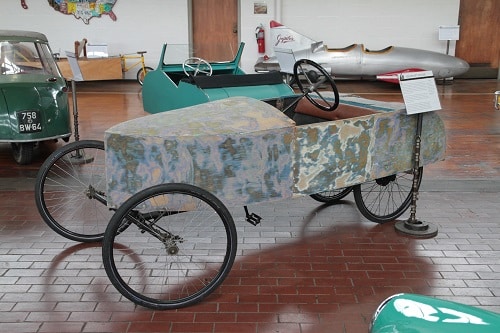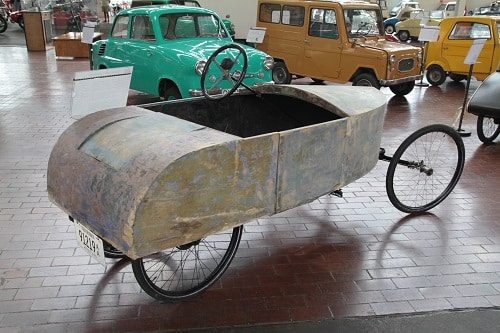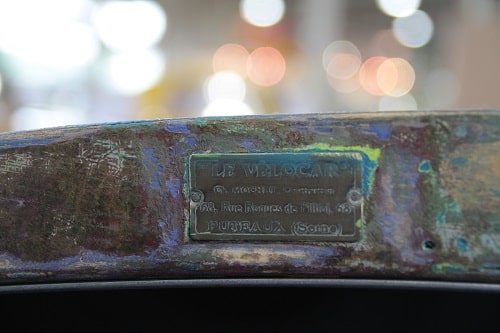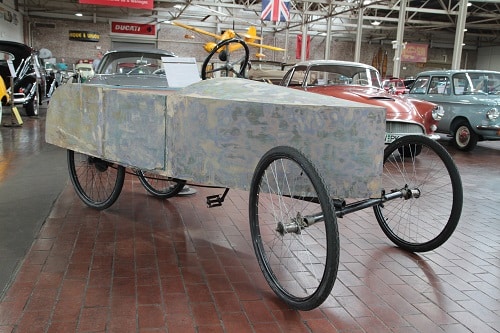
Mochet Le Velocar- 1926
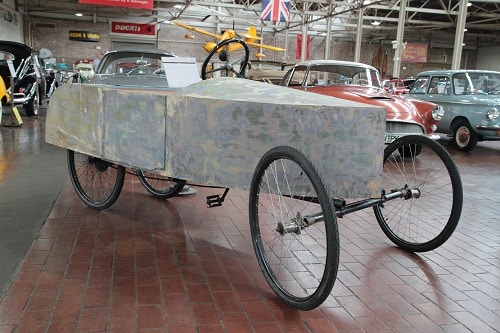
French inventor Charles Mochet 1880- 1934 had a passion for anything that rolled or flew while transporting people. When Georges, Mochet’s then 9-year-old son, repeatedly asked for a bicycle in 1923, his mother said no for fear he would injure himself. To please his son, Mochet built a lightweight recumbent quadricycle with reciprocating pedals. It was both safer for the rider and even faster than a conventional bicycle! After building the first model, Mochet realized there was a real market for his invention. In 1925 Vélocars were made to order by Mochet himself. In a 2001 interview, Georges Mochet recalled that his father “sold one a week, then one a day.”
The first Vélocars, like the one seen here, were made to seat two and had two sets of pedals. The light plywood body is tapered to create an aerodynamic effect. The pedals are connected by chains to an intermediate drive shaft located under the seat. These two chains, with different gear ratios, drive the rear axle. To change gears, one moves the attachment point of the chain to the cranks with a lever located between the seats
The popularity of these vehicles declined as the automobile became more affordable, but regained popularity following WWII. By this time, people had been retrofitting small engines to the Vélocar. After his father’s death, Georges Mochet took notice and began to sell the Vélocars with both pedals and a 100cc engine. As European Economic Conditions improved in the 1950’s, the Vélocar once more fell out of favor. Mochet then changed gears to focus on production of San Permis vehicles without pedals.
Specifications:
Manufacturer: Charles Mochet
Country of Origin: France
Drivetrain Configuration: Chain-drive
Transmission: 3 speed manual
Top Speed: As fast as you can pedal!
Years of Production: 1925-1929
Number Produced: Unknown
Original Cost: Approx. ₣2.500 – ₣3.900 ($118- $185)

